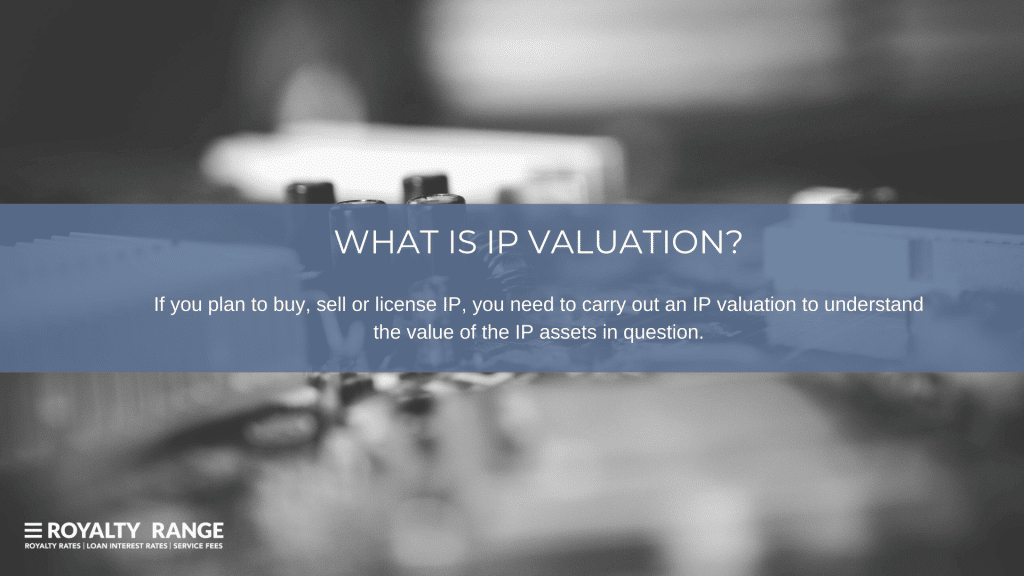What is IP valuation?

Kris (Kestutis) Rudzika |
November 15, 2020

IP valuation is the process of determining the value of intellectual property assets such as patents, trademarks, copyrights and trade secrets. If you plan to buy, sell or license IP, you need to carry out an IP valuation to understand the value of the IP assets in question.
Why you might need to value IP
There are a number of reasons you might need to value IP. You might be selling intellectual property rights or setting transfer prices for an intercompany licensing transaction.
Here are some of the main purposes for which organizations carry out IP valuations:
- IP licensing deals
- Franchising
- Transfer pricing
- Seeking funding
- Selling a business
- Mergers and acquisitions
- Bankruptcy
- Joint ventures
- Tax planning and compliance
- Litigation support
How to value IP
There are many IP valuation methods you can use to value IP and IP rights. These fall into three main categories: 1) market-based; 2) cost-based; and 3) income-based methods.
(It’s up to you to decide which approach is most appropriate for your IP valuation. Different approaches are more suited to some types of valuations than others – it depends on the IP’s stage of development, the aim of your valuation, and the availability of reliable data.)
- Market-based methods
Market-based IP valuation methods determine an asset’s value by looking at the price charged for similar IP in transactions between unrelated parties. Under this method, it is important to find data on IP or IP rights that are sufficiently comparable to the IP being analyzed – in particular, ensuring that the economically relevant characteristics of the transactions are comparable. There are a number of resources you can use to find comparable market data, including specialist royalty rates databases like RoyaltyRange.
Find out more about market-based methods in our blog on IP valuation methods.
- Cost-based methods
Cost-based IP valuation methods measure value by assessing the costs involved in creating and developing the IP. They look at the costs incurred by the business that created the IP in question, as well as the costs of recreating a similar IP asset or product that uses the IP.
Find out more about cost-based methods in our blog on IP valuation methods.
- Income-based methods
Income-based IP valuation methods base value on the income the IP is expected to generate in the future. Also known as economic benefit methods, they identify the economic benefit that the IP is predicted to bring to the organization over the IP’s useful economic life.
Find out more about income-based methods in our blog on IP valuation methods.
Potential challenges with IP valuation
Valuing IP assets can be complex, as there are many different factors and features that can affect the value of each IP asset. The value of IP can change over time – for example, as its reputation in the market strengthens or decreases, as the uniqueness of the IP changes, or as the strength of the IP protection grows or diminishes. As such, when you are looking at the value assigned to similar assets in licensing agreements between unrelated parties, you need to make sure that the data is sufficiently comparable to the IP assets you’re analyzing.
Here are some of the specific features and factors that can affect the value of an IP asset (RoyaltyRange uses these comparability factors to find relevant data for your analysis):
Restrictions and specific features, such as:
- Restrictions on use, exploitation, reproduction, further transfer and further development
- Extent and duration of legal protection
- Useful life
- Stage of development
- Rights to enhancements, revisions and updates
- Expectation of future benefits
Limitations, such as:
- Geographical scope
- Date of agreement
- Effective date
- Cessation date
- Terms (time period)
- Class of product limitation
- Exclusivity
Functions, risks, costs and assets, including:
- Research and development
- Marketing
- Design and control of research and marketing programs
- Defense and protection of intangibles
- Quality control over functions performed
- Unsuccessful research and development
- Unsuccessful marketing
- Product obsolescence, technological advances of competitors (adversely affecting the value of the intangibles)
- Infringement, time consuming and costly defense
- Product liability
- Bear the costs to support the performance of functions
- Provide compensation to other parties performing the functions
- Research and development costs
- Marketing costs
- Knowledge of own employees
How to find comparables for IP valuation
While it can often be difficult to find reliable comparables for your IP valuation, the RoyaltyRange database makes it easy. To use our One Search service, simply tell us your search criteria and contact details (via a purchase form on the One Search page). We’ll send you a free preview of relevant licensing agreements within our database – manually compiled by our experts and checked against more than 50 comparability factors. With our strict comparability checks, you get accurate, relevant comparables data for your IP valuation. Plus, as it’s presented in an easy-to-use report, you save time on your analysis.
To find the latest comparables for your IP valuation, get started with One Search today.
Request One Search
We will perform the search and deliver the initial results within hours, at no cost.




